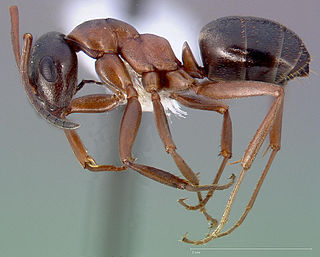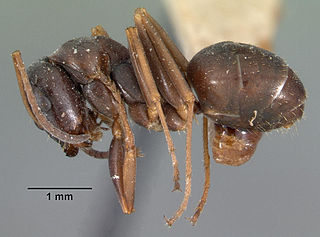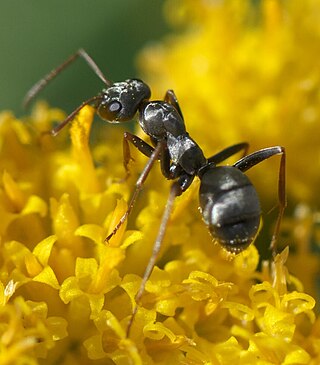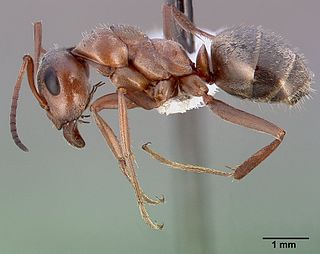
Formica is a genus of ants of the family Formicidae, including species commonly known as wood ants, mound ants, thatching ants, and field ants. Formica is the type genus of the Formicidae, and of the subfamily Formicinae. The type species of genus Formica is the European red wood ant Formica rufa. Ants of this genus tend to be between 4 and 8 mm long. Ants belonging to the Formica genus possess a single knob or bump located between their thorax and abdomen. These ants primarily feed on honeydew, a sugary liquid produced by aphids. Formica ants appear to take on a shepherding role with smaller aphids, relocating them to different parts of plants to ensure a continuous food source for the aphids. By doing so, the ants can establish a relatively sustainable honeydew supply for both themselves and their colony.

The Formica rufa group is a subgeneric group within the genus Formica, first proposed by William Morton Wheeler. This group contains the mound-building species of Formica commonly termed "wood ants" or "thatch-mound ants", which build prominent nests consisting of a mound of grass, litter, or conifer needles. The species Formica rufa or the red wood ant is the type species of this subgroup.

Formica comata is a species of ant in the family Formicidae.

Formica accreta is a species of ant in the family Formicidae.

Formica perpilosa is a species of ant in the family Formicidae.

Formica propinqua is a species of ant in the family Formicidae.

Formica neorufibarbis is a species of ant in the family Formicidae.

Formica subaenescens is a species of ant in the family Formicidae. It is found in North America.

Formica podzolica is a species of ant in the family Formicidae.

Formica subpolita is a species of ant in the family Formicidae.

Formica integra is a species of ant in the family Formicidae.

Formica xerophila is a species of ant in the family Formicidae.

Formica gynocrates is a species of ant in the family Formicidae.

Formica sibylla is a species of ant in the family Formicidae.

Formica gagatoides is a species of ant in the family Formicidae. It is found in Europe.

Formica oregonensis is a species of ant in the family Formicidae.

Formica integroides, also known as the Vinegar Ant, is a species of ant in the family Formicidae.

Formica aerata, the grey field ant, is a species of ant in the family Formicidae.

Formica querquetulana is a species of ant in the family Formicidae.

Formica argentea is a species of ant in the family Formicidae.




















